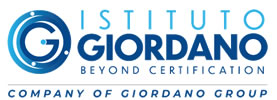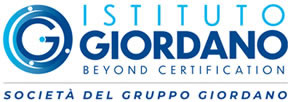EN 45545: fire safety requirements for materials and components used in the railway sector
(Pubbl. 02/04/2025)EN 45545 is the European standard for materials used in the construction of railway vehicles.
Published in 2013, it became mandatory across Europe in 2016 and applies to various types of railway vehicles, including high-speed trains, regional trains, trams, subways, and double-decker trains.
The purpose of the EN 45545 series of standards is to protect passengers and staff by minimizing the risk of fire and controlling the speed and extent of its development once it occurs.
The EN 45545 standard series includes the following parts:
Part 1: General
Part 2: Requirements for fire behavior of materials and components
Part 3: Fire resistance requirements for fire barriers
Part 4: Fire safety requirements for rolling stock design
Part 5: Fire safety requirements for electrical equipment
Part 6: Fire control and management systems
Part 7: Fire safety requirements for flammable liquid and gas installations
The protection strategy is essentially based on the following measures:
- Prevention of fires caused by technical failures, equipment design flaws, and vehicle design flaws (Parts 1, 4, 5, 7)
- Minimization of the likelihood that materials installed on the vehicle will ignite in case of accident or vandalism (Parts 1, 2)
- Fire detection (Part 6)
- Limitation of fire spread (Parts 2, 3)
- Minimization of the impact on passengers and staff in terms of heat, smoke, and toxic gases produced by the fire (Part 2)
- Fire control and management (Part 6)
EN 45545 Categories
Operational categories
Operational Categories (OC) refer to the vehicle's operating conditions and describe the type of operation for which the vehicle is designed, as well as the environmental characteristics in which it is used.
The operational categories are assigned based on two main aspects:
-
Type of vehicle operation: for example, whether the vehicle is used for long-distance or short-distance passenger transport, in urban or suburban environments.
-
Access and rescue in case of fire: the ability to respond quickly in the event of a fire and safely evacuate passengers.
Specifically, the operational categories defined in EN 45545-2 are:
OC1: Vehicles operating in environments with a low fire risk and low passenger density.
Examples: regional or long-distance trains with low passenger flow, vehicles used on less crowded routes.
OC2: Vehicles operating in environments with a moderate fire risk and medium passenger density.
Examples: high-speed trains on longer routes or regional trains with higher passenger density.
OC3: Vehicles operating in environments with a high fire risk and high passenger density. In this case, accessibility and safety during emergencies are particularly critical.
Examples: subways, trams, and trains operating in densely populated urban or suburban areas.
OC4: Vehicles operating in environments with an extremely high fire risk and very high passenger density, where emergency response is difficult. In these cases, fire safety and rapid evacuation are essential.
Examples: some high-capacity trains in subways or in areas with elevated fire risk, such as trains passing through very long tunnels or other high-risk zones.
Design Category
Design Categories are related to the arrangement of elements within a railway vehicle and, in particular, to the likelihood that a fire could start and spread in a specific area.
The Design Categories specified in the standard are divided as follows:
-
Design Category A: Areas with high exposure to fire risk, such as engines, driver’s cabs, vehicle access zones, or other critical areas where the risk of fire is higher.
-
Design Category D: Areas with moderate exposure to fire risk; for example, inside passenger coaches or in less vulnerable areas that are still subject to risk (such as certain transit zones or corridors).
-
Design Category N: Areas that are not accessible or not exposed to fire risk; for example, components located in spaces that are not accessible to occupants or not in direct contact with risk-prone areas (such as underfloor areas, technical compartments, or spaces not usable by passengers).
-
Design Category S: Areas not directly exposed to flames or heat, but that must still meet fire safety requirements—such as materials used for wall and ceiling linings or other areas not subject to direct fire exposure.
These two categorization systems—Operational and Design—are complementary and are used to determine the Hazard Levels (HL). This is one of the key aspects in assessing fire risk for components and materials used in railway vehicles.
For more information about the activities carried out by Istituto Giordano in accordance with EN 45545-2, visit the dedicated page.
 Per info: Giombattista Traina T. 0541322.349 E-mail g.traina@giordano.it
Per info: Giombattista Traina T. 0541322.349 E-mail g.traina@giordano.it 









 Do you need more information about our services?
Do you need more information about our services?